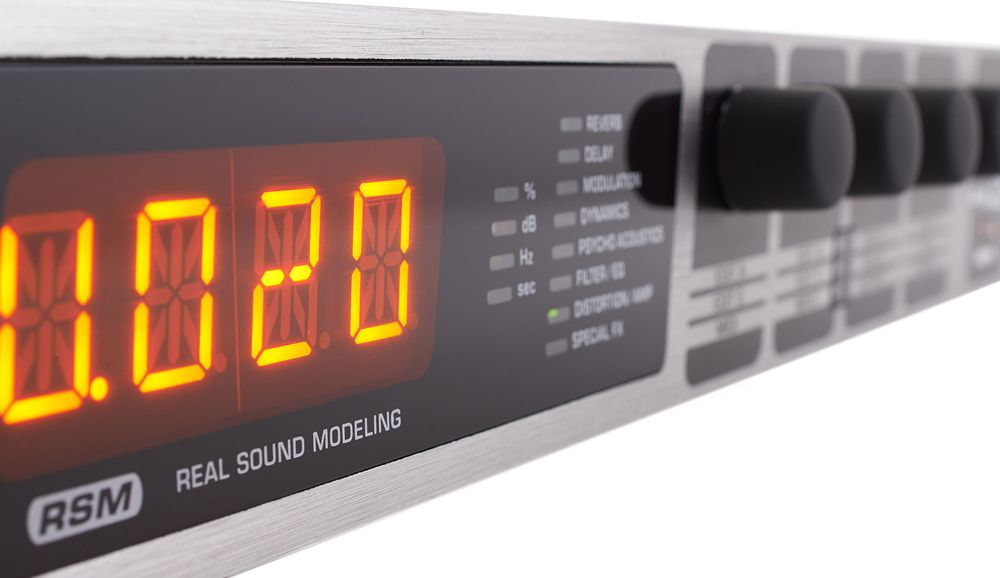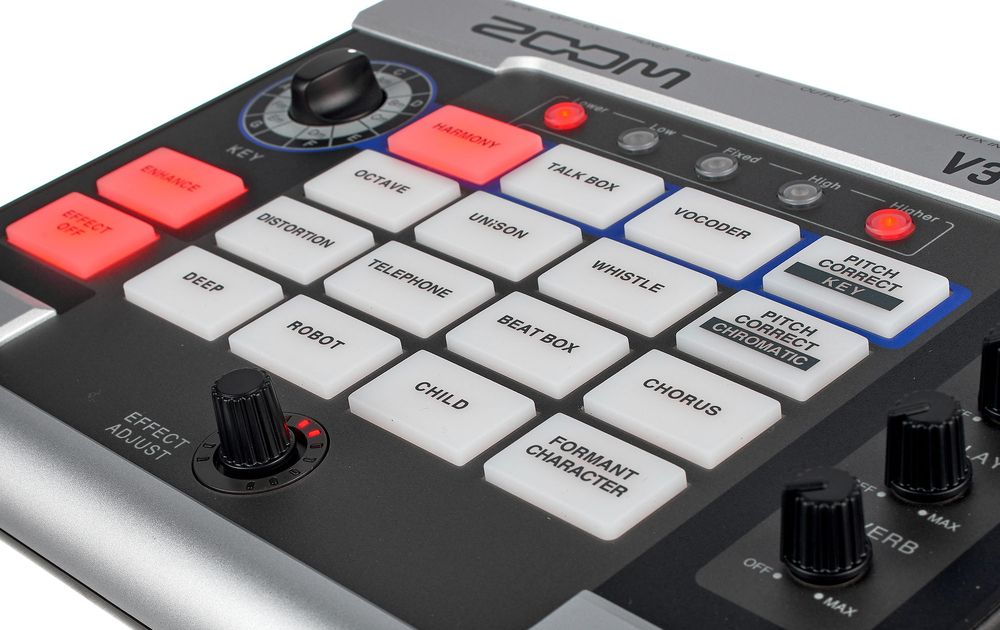11. Making the right choice: Ease of Use
When buying a multi-effects unit, you can and should pay attention to many details. This way, you can find the right device for your needs and invest not only in good sound results but also in a lot of fun during its use. In addition to the sheer number of offered effects and their sound quality, you can focus on the display, controls, preset management, the number, format, and quality of inputs/outputs, and also on remote control.
Display
Ideally, the multi-effects unit's display should be navigable through its settings and provide information about important details of the individual effects you use. This makes working with the device much easier. However, there are some pitfalls to consider. Check if all the relevant values that you need for the individual included effects can actually be set and displayed in the screen. In the worst case, you might only see the preset name, and adjusting the parameters won't be reflected in the display. Another point that speaks for the quality of a display is its resolution. It doesn't have to be the finest display, but it should be adequate and suitable for your intended use. It's essential that the size and type of displayed parameters match. While basic digits may suffice for showing preset numbers, a graphical representation of the signal flow on an LCD display can be something you are looking for when working with more complex effect chains.

In some cases, displays with simple indicators are enough
One of the most critical aspects of a multi-effects unit display is its lighting. You can test whether it's bright enough by trying the unit in a dark room or by covering your head and the multi-effects unit with a jacket or blanket. The same goes for the display's readability in bright environments. If the equipment is to be used at an outdoor event in bright sunlight, the brightness and contrast of some displays can limit their readability. This leads to another question: are essential parameters like display brightness and contrast adjustable? Are the adjustment ranges sufficient for your intended use? Test whether the display is readable from different angles. Look at the display from various sides, including at sharp angles. And do this not only with constant parameters but also during simulated practical use while adjusting different values.
Controls
The type of knobs, buttons, jog wheels, and other controls also plays a significant role. For example, consider whether buttons act as fine-resolution digital encoders or merely as potentiometers with a fixed travel path. For some applications and parameter selections, it's advantageous if a selection knob is detented. This makes it easier to select presets precisely. Conversely, for relatively finely tuned settings, unstepped controls are often more advantageous. For some controls, a light notch in the center position can be helpful, such as when adjusting stereo panning and signal level.
Not only the display but also the essential knobs and buttons can be illuminated for the most comfortable operation of the multi-effects unit. Don't forget to consider the size of controls. As a rule of thumb for rotary knobs: the finer the values that need to be set, the larger the control cap should be. This facilitates precise adjustment. When dealing with more complex devices, look for the presence of multi-function buttons. You can greatly speed up your workflow by combining rotary and push functions. In addition, multi-function buttons provide more clarity on the control panel of the multi-effects unit.

Depending on the intended use, the user interface is an essential factor in a multi-effects unit.
Order also matters when it comes to the layout of controls. Do the arrangement, labeling, and coloring of the panel help you understand the internal signal flow or intuitively grasp the editing possibilities? Are the names of the controls clear or even self-explanatory? Another question to consider is whether all essential controls, such as the power switch, are actually located on the front of the unit. Few things are more annoying than having to crawl around a 19" rack cabinet in the semi-darkness of a stage just to turn on a device.
Presets
Another point to consider when looking at the usability of a multi-effects device is the number of presets it offers. However, you shouldn't just focus on the sheer number of factory presets. The deeper you delve into using the device and the more scenarios you use it in, the more important the number of user-saveable preset slots becomes. The more flexible you can work with the multi-effects unit, the more important a large reservoir of available program slots becomes.



